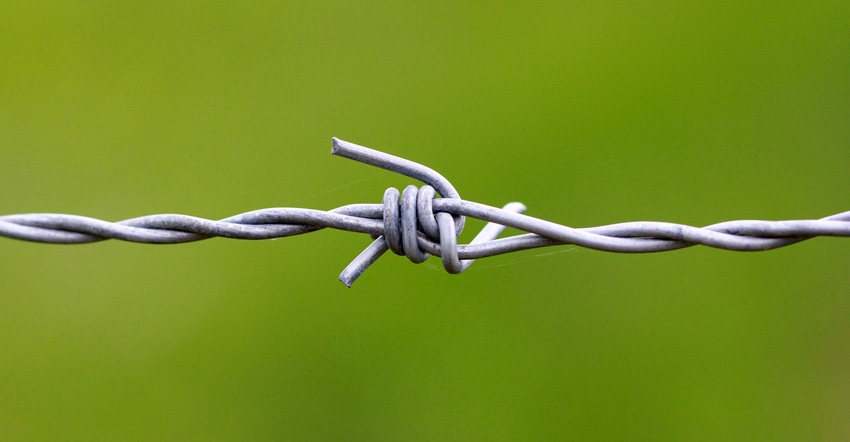Replacing fence? Check with NRCS technicians first, or risk losing ECP cost-share payments.

Landowners in the disaster zone of the Dec. 15 4-County Wildfire are starting to turn their thoughts to replacing permanent fence that was destroyed by the fast-moving blaze. Some may have already started the process.
Everyone wants a new fence that is “pig-tight, horse-high and bull-strong,” but before a posthole is dug or a strand of wire is stretched, landowners need to know that valuable cost-share payments from the Natural Resources Conservation Service are in jeopardy if they don’t rebuild that fence to NRCS standards and specifications.
Carla Wikoff, conservation price support division chief of the Farm Service Agency, and Dean Krehbiel, state resource conservationist with NRCS, gave valuable tips for producers rebuilding fence at the Dec. 29 informational meeting in Natoma, Kan.
Emergency Conservation Program
ECP provides 75% cost-share assistance to restore agricultural land damaged by natural disasters, Wikoff explains. That amount rises to 90% in the case of producers certified as “limited resource, socially disadvantaged, or beginning farmers or ranchers.”
And the replacement or restoration project must conform to NRCS standards and specifications to qualify.
ECP cost-share funds can be used to replace or restore permanent fences; restore conservation structures and other installations; and replant field windbreaks and farmstead shelterbelts.
In the case of permanent fencing, there are certain qualifications that must be met:
It’s only applicable to farmland where agricultural fences were destroyed by the disaster.
Materials and design must replace the fence to a similar type and function that existed before the disaster, and the fence must have been functioning before the disaster.
The fence design and installation must conform to NRCS standards and specifications.
The fence must be maintained for 20 years.
Wikoff explained that in the recent farm bill, ECP was adjusted to allow producers to request up to 25% of the total cost share available as an advance so that farmers, already devastated by the disaster, would be able to begin fence projects right away.
“Advance funds must be used for your expenditure within 60 days, and you must provide receipts to your county office within 60 days,” she added.
The cost-share payment may not exceed 50% of the agricultural market value of the land, and the maximum payment per person or legal entity, per disaster event, is $500,000.
Wikoff encouraged producers to discuss their options with their local FSA office.
Standards and specifications
Krehbiel also advised landowners to check with their local NRCS technical staff for help navigating the Kansas NRCS Conservation Practice Fence Construction Specifications and even designing their fence projects. They can be found online at agriculture.ks.gov.
Krehbiel offered some tips:
Fence posts. Posts need to be new and free from decay. Steel oilfield pipe for posts must conform to nominal dimensions. Steel “T” or “U Section” posts must be new and weigh at least 1.33 pounds per foot of length.
Wire. All wire must be new galvanized material. Standard barbed wire will be 12.5-gauge or heaver, with 14-gauge or heavier barbs.
Wire installation. Wires must be attached to the side of the fence post receiving the most pressure. And all wire fences except woven wire must meet height and spacing standards according to their intended use.
“There’s more specifications on using concrete and whatnot on steel and pipe posts, or brace assemblies, so again you’ll definitely want to work with your service center,” Krehbiel said.
And it’s even more important to check these standards before you go out and invest money in materials and labor, and you expect a cost-share payment.
About the Author(s)
You May Also Like



.png?width=300&auto=webp&quality=80&disable=upscale)
.png?width=300&auto=webp&quality=80&disable=upscale)
